Three years ago almost to the day I wrote this blog post about discovering the existence of Dr Nathaniel Bagshaw Ward’s Clapham home (thanks to the Clapham Society) where he housed a herbarium of over 20,000 specimens and a garden full of rare plants. I’ve been slightly obsessed with it ever since because its demolition has been on the cards for years. It feels tragic. To recap, Ward was the Victorian botanist whose name is attached to the portable glass boxes used to transport plants from around the world back to plantaholics in the UK. Wardian cases helped revolutionise plant hunting and with it plant knowledge. The house in Clapham was his base from which he will have visited Kew, the Chelsea Physic Garden and other famous institutions from this fundamental turning point in horticultural history.
The house now, at Clapham North tube (around the corner from our house) has been left to fall into disrepair. It is a sorry state:
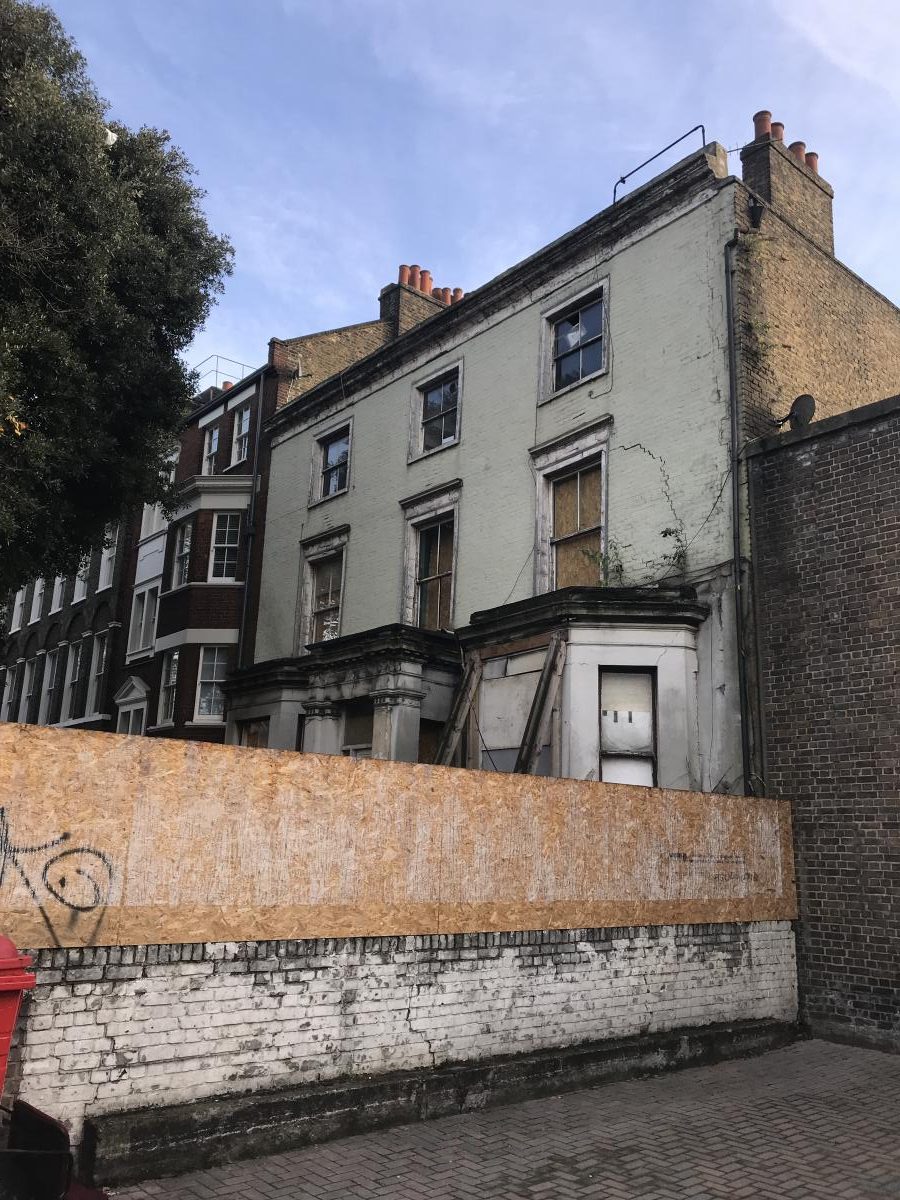
This week I was able to finally live a mini personal dream to see the back garden of the house. I was fully aware (*ahem* because I’d half climbed up the fence of a pub roof terrace to try and sneak a peak three years ago…) that none of the garden was likely to be left, even so, seeing the back of the house and where Ward and other Victorian botanists of his time – his contemporaries – will have stood was magical.
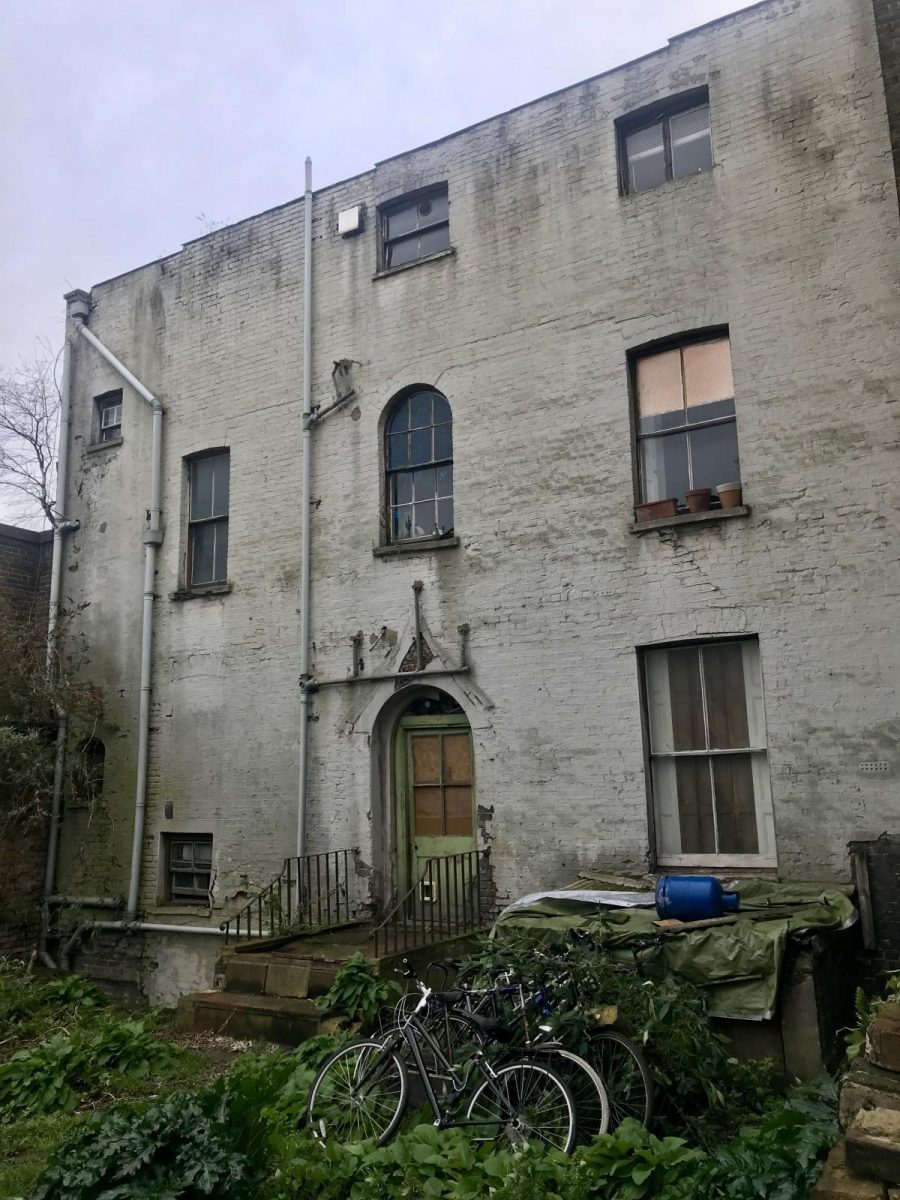
I know it’s been allowed to become dilapidated but seeing that central doorway, the matching central curved window, the walkway across the gap from the basement stairs to the garden. All original features from the height of Victorian Britain. In the downstairs window on the right you can see shutters that are almost certainly original too. It’s a beautiful scene.
My heart sunk however because work has begun to demolish the entire house apart from the front facade. The view above will be no more in a matter of weeks.
Ward will have lived here in the mid-1800’s, so none of the plants are likely to remain except, potentially, some lime trees that have been badly pollarded recently. It’s interesting to see Acanthus mollis here however. A British native plant used regularly in gardens. Are these ancestors of garden plants or of wild flowers from when Clapham was woodland and farmland (not long before this house was built).
The garden is huge. So huge the new development plans show at least half of this intended to be built on for flats and the rest of the garden to be covered with a very modern space.
From above, we get a better view of the garden.
It’s hard to see in this photo but there is some hard landscaping to be seen in the middle that are the edges of curved beds (look for the row of grey stone where the ivy, weeds and soil join). After seeing this I felt compelled to do some research into the history of it. There has been some talk of the building locally but what of the part of the house that was of no doubt of much more importance to Ward himself, the garden?
For the first time since the Victorian era, below people can see a plan of the garden from Ward’s time (taken from a copy of the 1870 ordnance survey map).
Sure enough, there is a curved bed (the angled part of the garden has been built on already).
Ward died in 1868 and moved out of London shortly before this due to ill health. So it’s possible that someone nipped in and redesigned it between then and the survey, but unlikely. Even so, this is a layout that very closely matches the layout of the curved beds we saw in the garden this week – which could make it a perfectly preserved Victorian garden design.
People familiar with Ward’s Clapham home story will notice that his famed glasshouse is not seen on this plan. Which is interesting. We had a moment of excitement when we saw this metal frame in the garden. It’s likely to be too modern to be a remnant of the famous glasshouse but it is fun to dream.
The more you look at the building now, the more you can see how it has deteriorated so badly. Felt has been used on the roof instead of tiles, a sure fire way of allowing water in.
You can see more original window and shutter work in this view and the steps to the basement.
Another view of the garden.
Ward’s role in botany isn’t fully known, he wasn’t the only person to invent a glass case for transporting plants. His name is associated with them however and that points to the fact he played a bigger role than we realise now. I look at the house and I feel sad. If I had the money I would transform it back into a site of horticultural heritage for all to enjoy. But who has millions of pounds spare.
I feel even sadder about the garden. Almost certainly ignored during research and planning for the building, who knows what history is beneath those leaves and soil. Especially as Victorians were notorious for throwing all of their rubbish into gardens rather than tips – bin lorries weren’t quite such a popular invention back then…
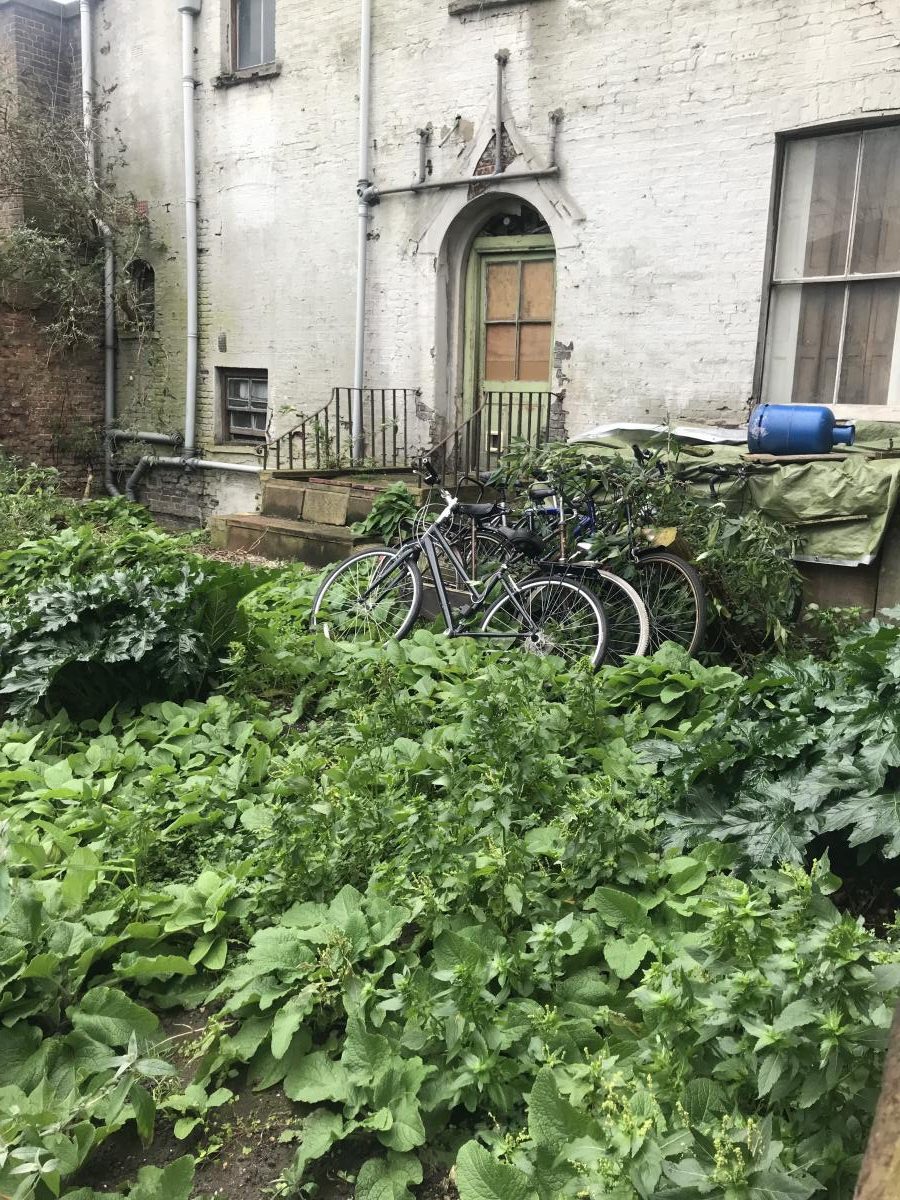
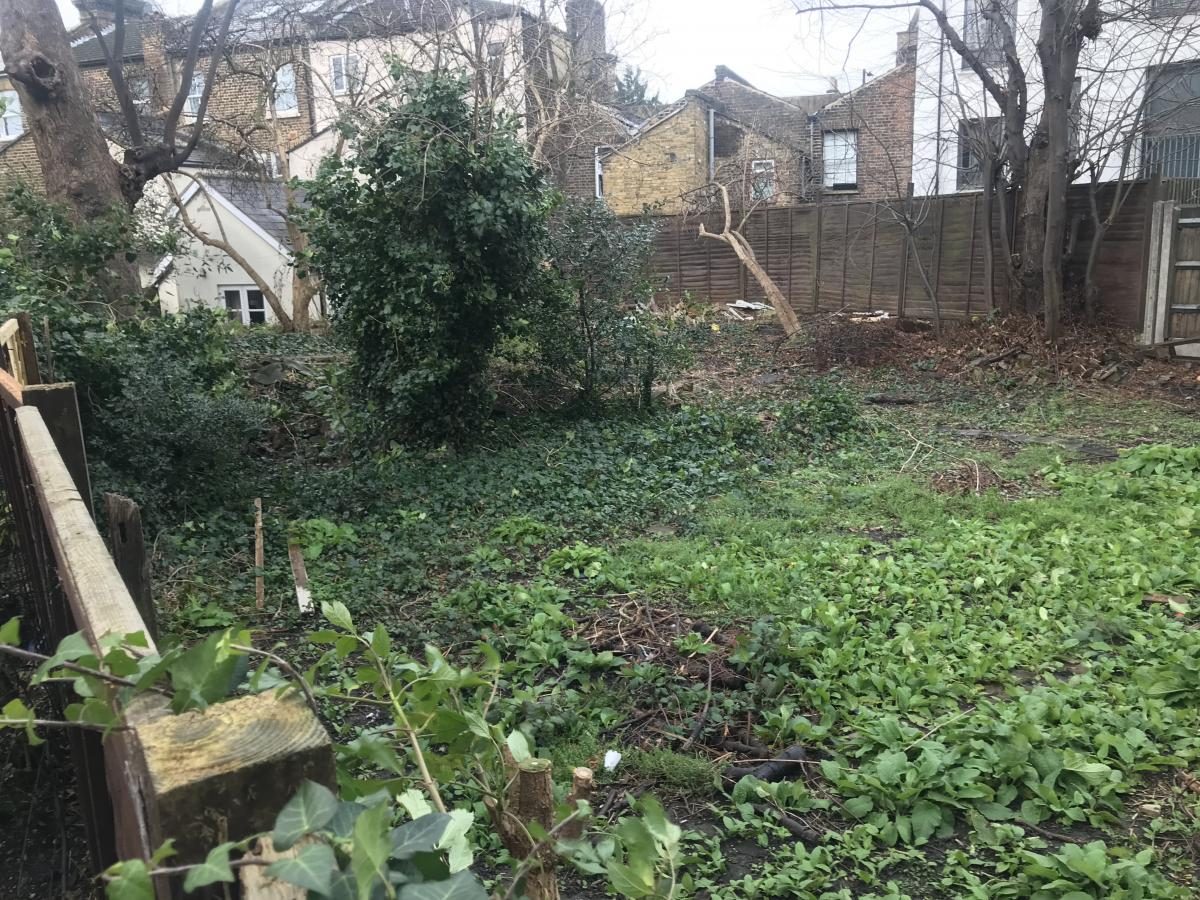
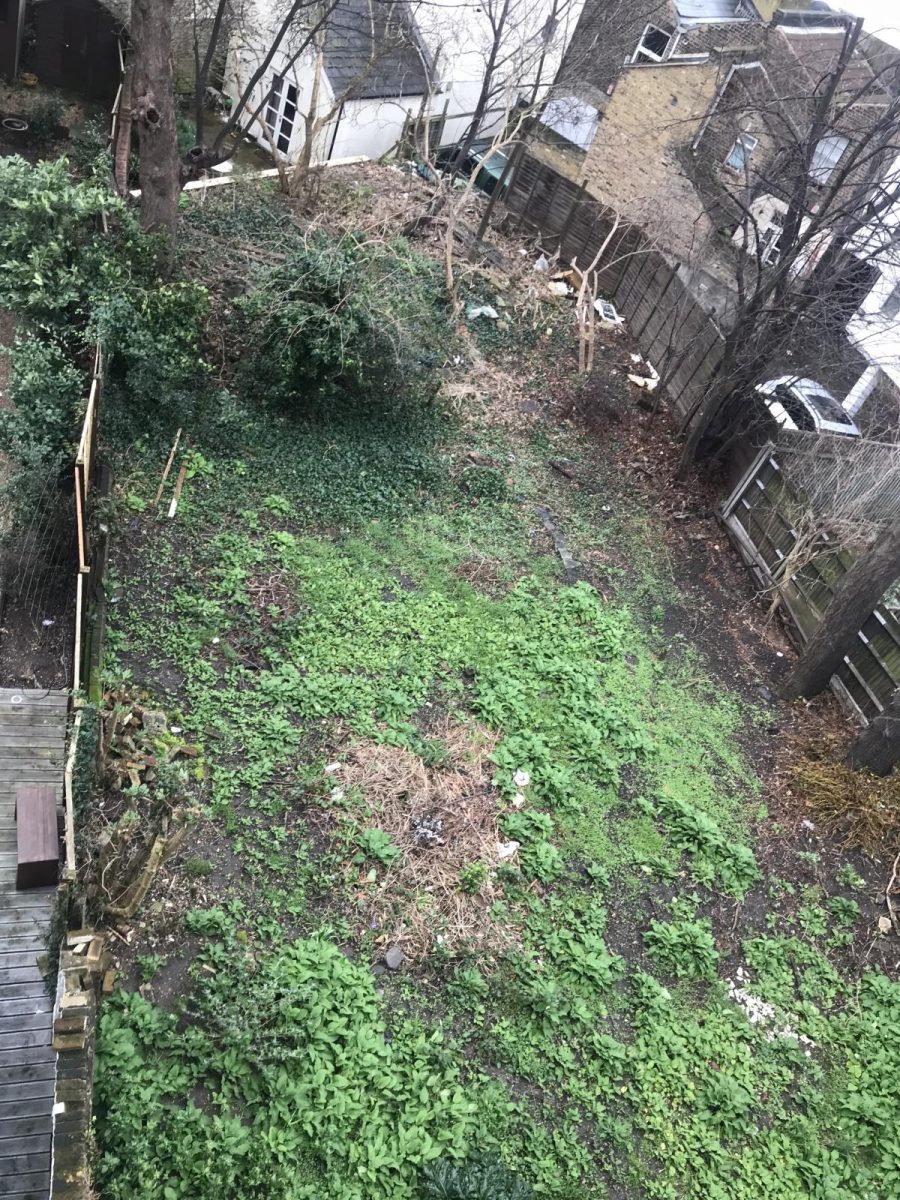
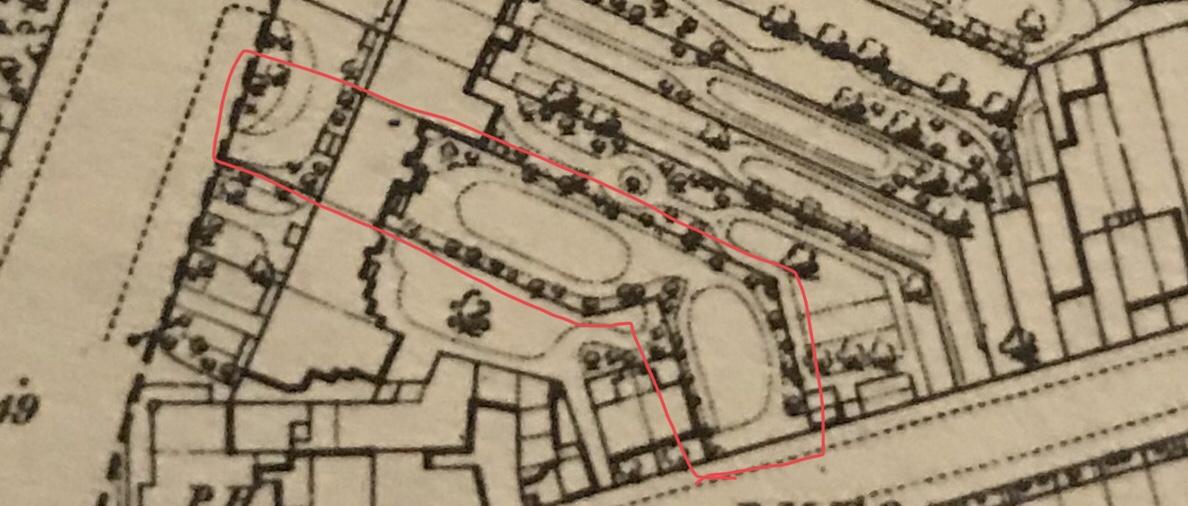
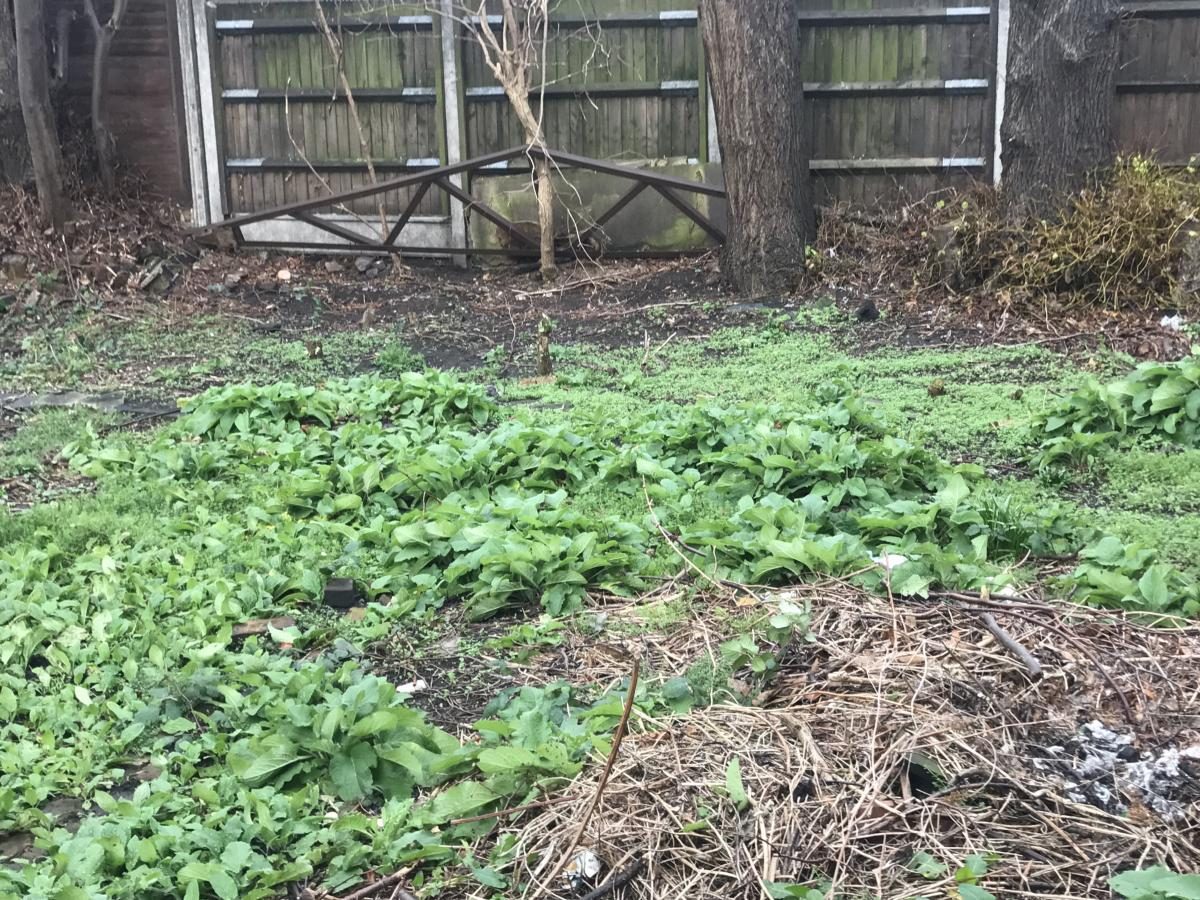
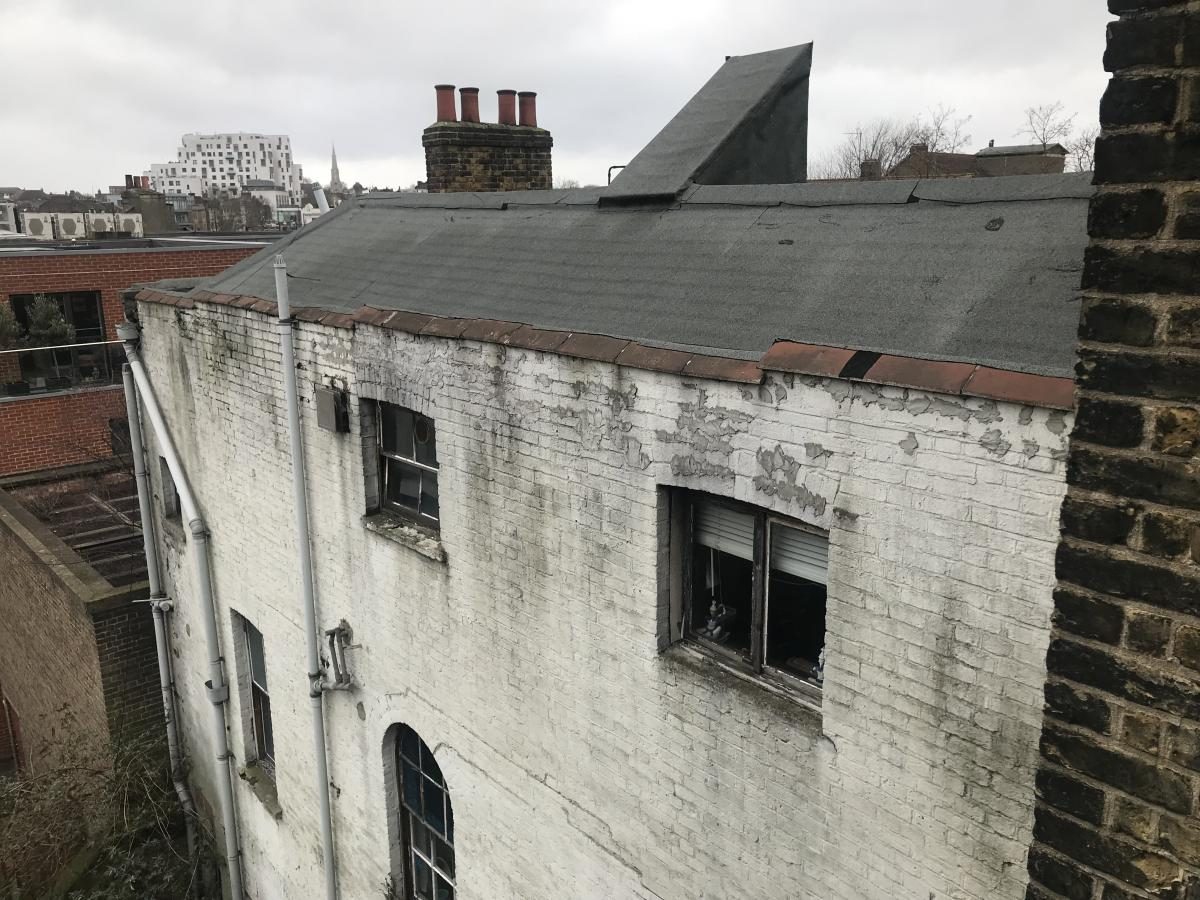
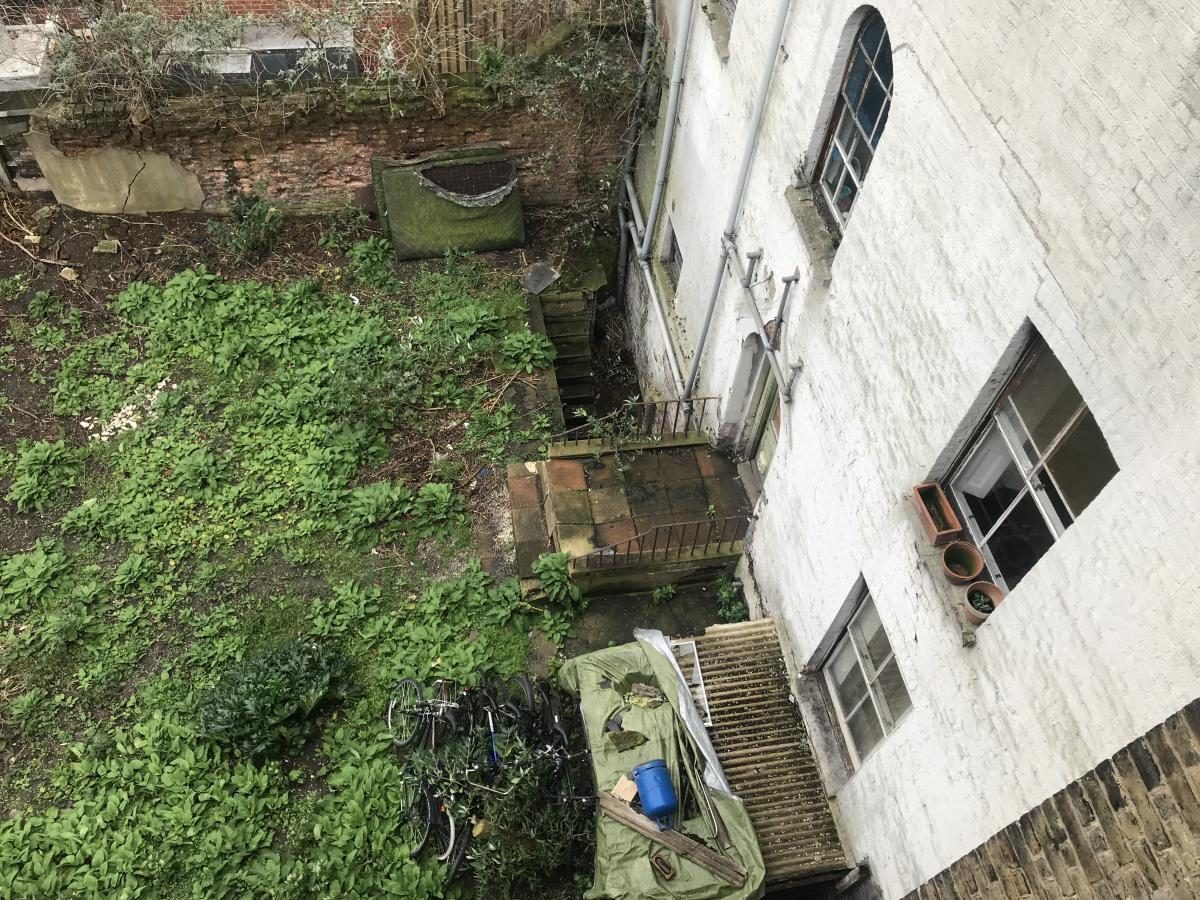
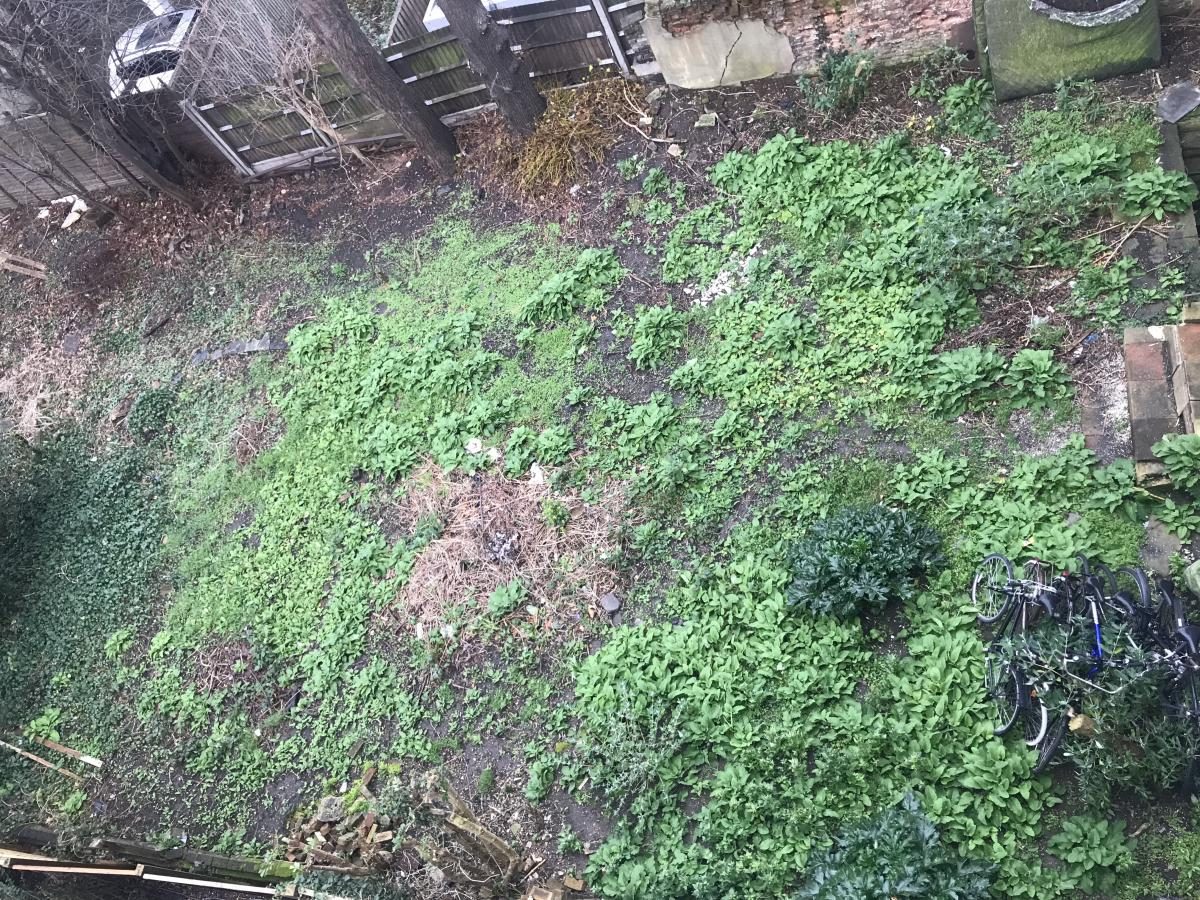
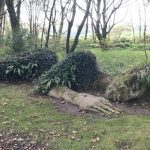
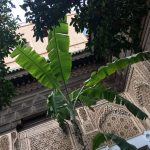

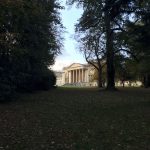
Thanks for writing this really interesting and rather sad post. The house and garden must have been beautiful in their heyday.
Thanks Alison, yes I imagine it was really lovely. The small door at the back is so village like compared to Clapham these days, but back then it would have been countryside.
Wonderful post, Jack (as always). Did you feel very naughty? Wow: that felted roof?! I enjoyed (if that’s the right word) reading it so much that I’ve just put a link to it on my Renaissance Gardener Facebook page which I’m trying to use it a little more often. Have a great weekend :-).
Thank you Sharon! I should say, these photos are from the neighbouring property, I’m not actually in the garden! (I wish). I know, the felted roof is a shocker. Thanks for sharing it. X
Very interesting. Near me are the remains of a garden belonging to the large house of a historic figure in Cardiff from c1900. The house is now a school and most of the garden is separate, overgrown and forgotten. I would love to know who owns it, and see it restored. These historic gardens are part of our collective background, it’s a shame when they are lost
Yes, what a project that would be! We can’t restore every garden and house but sometimes when something is important to enough people it feels worthwhile 🙂
Thanks for an interesting post and its thoughtful insight into another piece of soon-to-disappear history. This shows the value of blogs – when a subject is approached from the heart rather than just from the brain. I wonder how long those forgotten flower pots on that window sill have survived the ravages of storms, only to be dislodged finally by man. Those bicycles look remarkably well-preserved compared to the property itself! 😉
Glad you liked it John! I feel really passionate about the building, probably just because it’s so close to home. Its history is very cool though. Yes… the bikes look very new… I think the owners would be glad to have them back!
I wonder if the Garden Museum would be interested in following up on your excellent detective work. Probably too late now, alas. Thank you for writing about this.
Horrified that they put the plumbing pipes thru the arch above the main door!
I saw a Wardian case at the Chelsea Physic garden – sad that his house is left to fall down.
Yes, unbelievable how it has been treated over the years. Regardless of its history for such a building in a prime area to be left to deteriorate like that is not acceptable.
Totally shameful that any property should be allowed to get into such a state. I assume it is currently housing squatters? Perhaps I missed it but is this property privately owned or is it belonging to the state? What a pity that Clapham Historical Society and indeed your local council cannot do something about this. If it is in private ownership all the more reason that fines be put in place Terribly sad
It’s probably too late now or it may not be something they would consider, but this is copied from an article in the Daily Telegraph.
Anyone can apply to have a building listed – just use the application form on our website, historicengland.org.uk. Go to “Listing” then “Apply for Listing” on the drop-down menu. The service is free and we carefully consider each application. We also carry out thematic listing projects to protect types of places that may be under threat, or which we feel are under-represented. These recently included public libraries, pubs built between the wars and even daring artworks designed to enliven our shared public spaces after the damage caused in the Second World War. Sometimes we need the public’s help on these projects so do keep an eye on our website for our forthcoming research and listing updates.
NOOOOOOOO! I am late to this heartbreaking party, but I just had to comment. I have recently been doing research on our dear Mr. Ward for a fictional series that I’m writing on Victorian Fern Fever. The more I read about him, the more respect and admiration I have for his innovations. By all accounts, he was a humble man who was highly esteemed, as well as a gifted gardener. I think I might have scaled that fence armed with a spade to find some Pteridophyta! 😉
Thanks for the post Jack – I live down the road from here and always wondered about the history of this house. I had seen previous architectural plans to tear the whole building down and replace with a modernised block but it now looks like the main house and facade are being restored which is good. There will be a penthouse level added on top and a full bottom to top extension to the rear. It does seem a shame to still lose the charming Victorian rear facade of the building as you mention – but London property prices being what they are, I guess this renovation is part of the project to enlarge it and maximise resale values… It’s great you preserved the original rear in photo form at least. It really is a throwback to another age when Clapham would have been a village..
I’d be interested to know why it was empty for so long if anyone on here happens to know?
While seeking a gift online, I ran across a Wardian terrarium design, and it started me down a “rabbit hole” following the story of Dr. Nathaniel Bagshaw Ward’s game-changing creation for plant growth and trans-oceanic import/export. Upon searching 397 Clapham Rd, London, on Google Maps, I found that Ward’s homesite had apparently been spared from demolition, but was preserved instead, as Jon Maycroft so kindly noted in 2019. I love digital rabbit holes . . .
Thank you Jack Wallington for starting me on this very fulfilling excursion!